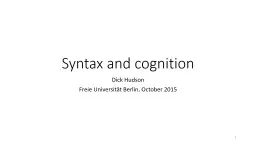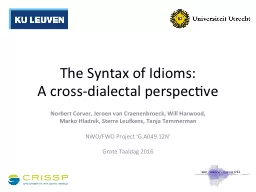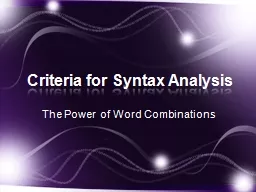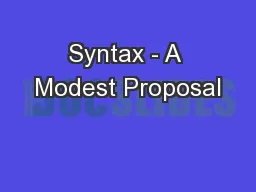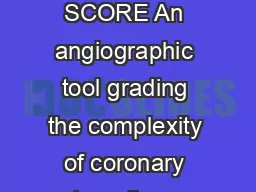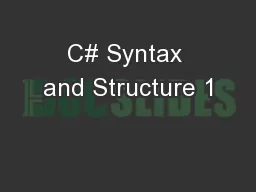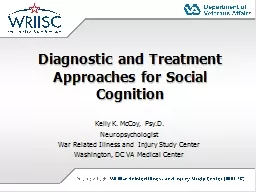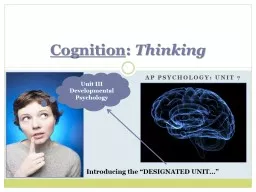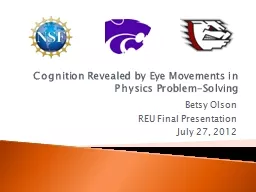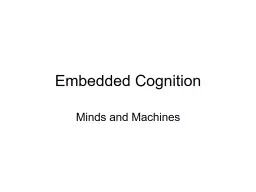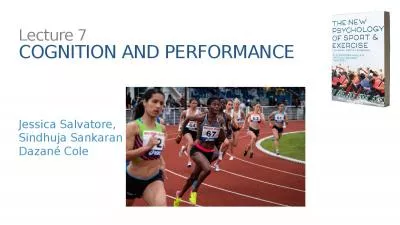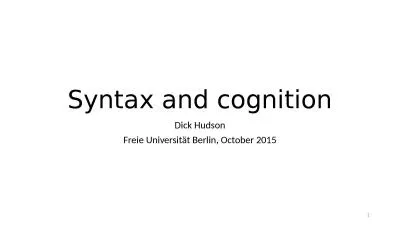PPT-Syntax and cognition
Author : tawny-fly | Published Date : 2016-07-08
Dick Hudson Freie Universität Berlin October 2015 1 Plan How syntactic theory has been influenced by psychology Why cognition Phrase structure and dependency structure
Presentation Embed Code
Download Presentation
Download Presentation The PPT/PDF document "Syntax and cognition" is the property of its rightful owner. Permission is granted to download and print the materials on this website for personal, non-commercial use only, and to display it on your personal computer provided you do not modify the materials and that you retain all copyright notices contained in the materials. By downloading content from our website, you accept the terms of this agreement.
Syntax and cognition: Transcript
Download Rules Of Document
"Syntax and cognition"The content belongs to its owner. You may download and print it for personal use, without modification, and keep all copyright notices. By downloading, you agree to these terms.
Related Documents

